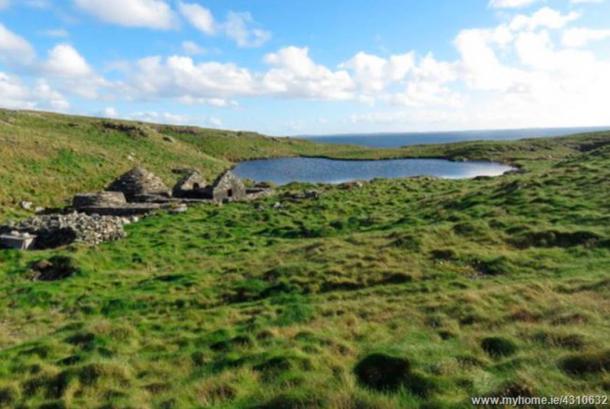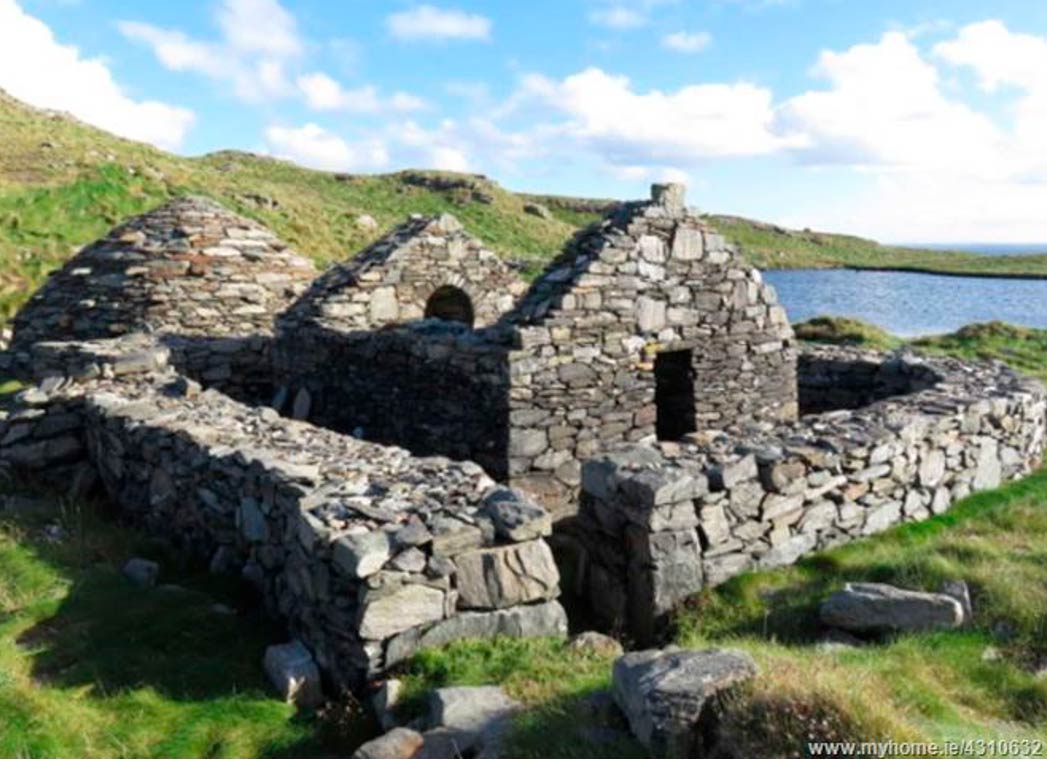Uninhabited Irish Island Complete with Ancient Ruins Is Up for Sale
The West Coast of Ireland has some of the finest scenery in the British Isles and indeed Western Europe. Its many islands such as Achill are renowned for their wild beauty. If you have ever dreamed of owning one, you are in luck! A property website in Ireland has just listed a remote and historic County Galway island, complete with ancient ruins, for sale.
High Island has been listed for sale at €1.25 million (US $1.4 million). According to the Irish Times, the island is known as Ardoileán in Irish. It is about 80 acres in extent and is located about 2 miles (3 km) off the Galway coast. There are two natural lakes on the island, and it is at present uninhabited with two dilapidated modern buildings.

High Island is up for sale. Credit: Myhome.ie
A Rich History
The island was not always uninhabited. It is believed to have been settled by people in the early Iron Age, with some of the ruins and artifacts dating back to 300 BC and evidence from pollen samples suggesting occupation from 1000 BC.
Evidence suggests that High Island was populated by Celtic people. Early Medieval Christian monks seeking solitude as part of their quest to be nearer to God built a small hermitage here. This was quite common in the early medieval era, when many Irish monks established similar retreats on remote islands, for example on Skellig Michael, which was featured in a recent Star Wars movie.
The MyHome website reports that the monastery is believed to have been founded by St Féchín of Fore in the 7 th century AD. The site of the hermitage was selected because it offered some shelter from the many Atlantic storms. St Féchín is believed to have died during an epidemic on the island. The original hermitage eventually became a large monastery and even had one of the first known monastic water mills in Ireland.
- The Remote Irish Monastery Where Medieval Christianity Meets Fictional Jedi Spiritualism
- Viking beaters: Scots and Irish may have settled Iceland a century before Norsemen
- Revealing the Recluse: The Sad and Secret Lives of Hermits

The monastery ruins on High Island at the edge of a lake. Credit: Myhome.ie
Curse Stone
The monastery was abandoned possibly as a result of Viking raids or a decline in the popularity of monasticism. There are extensive remains of the monastery to be seen and these include a perfectly preserved beehive stone hut. These distinctive huts were where monks lived and prayed and where they lived as hermits. There are also some collapsed beehive huts, a ruined church, an oratory and a complete stone enclosure in the area which is ‘maintained by the Irish Office of Public Works’’, according to Irish Central.
One of the most interesting monuments on the island is a large almost spherical boulder that has been rounded and smoothed by tools. The stone may have been used as a ‘cursing stone’, that is, it was used in ceremonies that cursed some enemy or foe. Similar stones have been found on other islands in Ireland and Scotland and they may have been used in pagan Celtic religious practices, which were continued by Christians.
In the 1700s, there was a mine on High Island and some of the stone shelters of the miners can still be seen. Interestingly, unlike other islands off the west coast of Ireland, it was not settled by people fleeing famines on the mainland in the 18 th and 19 th century. In recent years, the site of the monastery has been intensively excavated by Irish archaeologists.

High Island, Ireland. Credit: Myhome.ie
Abandoned Island
The island has some stunning scenery and it offers remarkable views of the open Atlantic sea. However, in winter it is regularly buffeted by storms and gales. It was owned for over two decades by the well-known Anglo-Irish poet Richard Murphy (1927-2018), and many artists visited seeking inspiration from its stunning scenery.
The island has been deserted for many years allowing birdlife to flourish. MyHome reports that “there is an abundance of birdlife on the island with many types of gulls, fulmars, Manx shearwaters, petrels, and oystercatchers’’ on the isle. The local birdlife is protected by an EU special directive, especially its rare Arctic Tern.
Historians are hoping that the Irish government will buy the island in order to preserve the island’s history and its unique wildlife. One possibility is to restore the monastery and beehive huts and turn it into a tourist destination. If a private buyer does buy it, they will not become the owner of its historic sites as they belong to the Irish people.
Top image: Ancient ruins on High Island. Credit: Myhome.ie
By Ed Whelan




















Comments
I agree wholeheartedly with the previous commenter. Calling Ireland a part of the British Isles" is s terrible gaffe. It's an easy edit: remove "in the British Isles" and leave it as "in Western Europe."
In the first sentence of this article the west coast of Ireland is said to have "some of the finest scenery in the British Isles".
This is a hugely insensitive error on the part of the author as Ireland gained independence from the United Kingdom almost a hundred years ago. Therefore referring to Ireland as part of the British Isles is highly offensive to the Irish people and belittles their eight hundred year long bloody struggle for freedom.
I must then ask, with great respect, that this article be taken down until the above error in geographical terminology is corrected.
Regards,
Luke